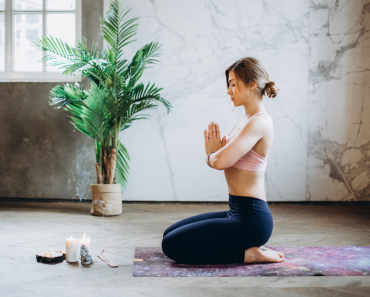Meditation is similar to physical fitness in that it focuses on the mind. But there are many different types of meditation, so how do you figure out which one to use?
“In the Buddhist tradition, the term ‘meditation’ means the same as ‘sports’ in the United States. It’s a family of activities rather than a single thing,” according to Richard J. Davidson, PhD, director of the University of Wisconsin neuroscience lab. “Different types of meditation demand different mental abilities.”
It’s tough for a novice to sit still for hours with nothing on their mind or have an “empty mind.” We offer some tools, such as a beginner meditation video or a brain-sensing headband, to assist you through this process while you’re just getting started learning how to meditate. Focusing on the breath is usually the simplest method to start meditating. Concentration is an example of one of the most common types of meditation.
Concentration Meditation
Concentration meditation entails focusing on a single item. Following the breath, repeating a word or mantra, gazing at a candle flame, listening to a monotonous gong, or counting beads on a mala are all examples of concentrating the mind. A novice may meditate for only a few minutes before working up to longer periods of time due to the difficulty of concentrating on the mind.
This variant of meditation entails redirecting your attention to the selected focus item each time you notice it wandering. Rather than attempting to catch every thought, you simply let them go. Your ability to concentrate improves as a result of this technique.
Mindfulness Meditation
Mindfulness meditation aims to help the individual become aware of their wandering thoughts as they pass by. The goal isn’t to get involved with the ideas or to evaluate them; it’s simply to pay attention to each mental note that comes up.
You may detect how your ideas and emotions move in well-defined patterns while you meditate through mindfulness meditation. With time, you may become more attuned to the human tendency to quickly assess an experience as positive or negative, pleasant or unpleasant. An inner equilibrium is achieved with practice.
In some forms of meditation, pupils practice a blend of concentration and awareness. Many types of meditation call for calmness — to varying degrees, depending on the instructor.
Other Meditation Techniques
There are a variety of different meditation techniques. A daily meditation practice among Buddhist monks, for example, focuses exclusively on the development of compassion. This entails imagining unpleasant situations and turning them into something good by replacing them with compassion. Moving meditation forms include tai chi, qigong, and walking meditation.
Try This Simple Meditation Steps For Beginners
This meditation exercise is a great place to start with meditation skills.
- Lie or sit comfortably. You could even want to invest in a meditation cushion or chair.
- Close your eyes. If you’re resting in bed, cooling eye masks or restorative eye pillows is a good idea.
- Simply breathe naturally without attempting to regulate the breath.
- Focus your attention on the breath and on how your body moves with each intake and release of air. Pay attention to how you move while breathing. Examine your chest, shoulders, rib cage, and belly while breathing. Simply concentrate on your breath without regulating its speed or intensity if your thoughts wander away. If you lose focus, return it to your breath.
To begin, keep this meditation for two to three minutes and then extend it.

